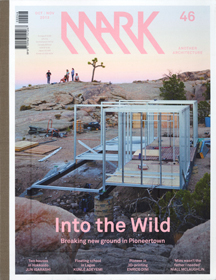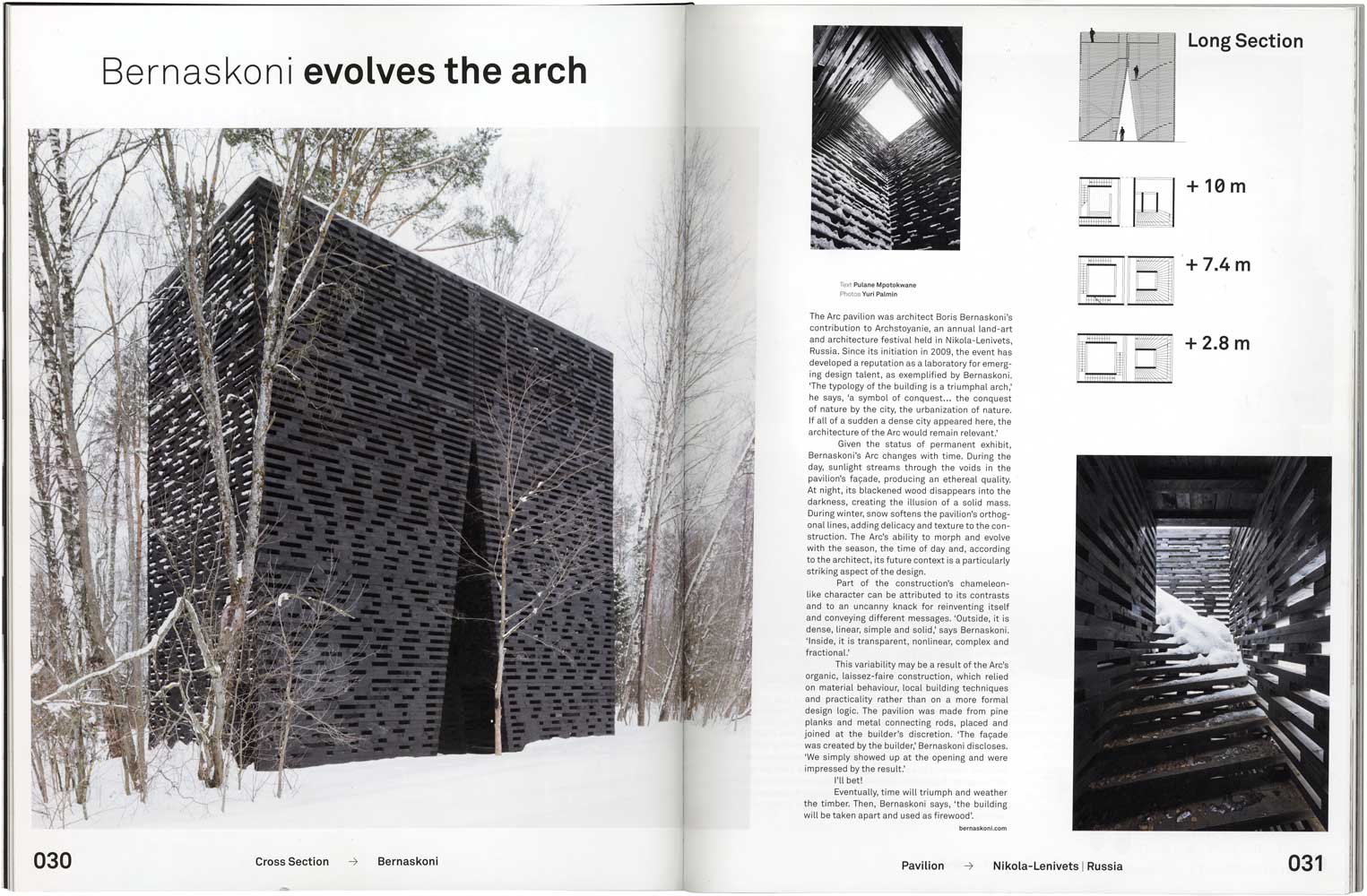
Ноябрь 2013November 2013

«The typology of the building is a triumphal arch, a symbol of conquest of nature by the city, the urbanization of nature»«The typology of the building is a triumphal arch, a symbol of conquest of nature by the city, the urbanization of nature»
The Arc pavilion was architect Boris Bernaskoni’s contribution to Archstoyanie, an annual land-art and architecture festival held in Nikola-Lenivets, Russia. Since its initiation in 2009, the event has developed a reputation as a laboratory for emerging design talent, as exemplified by Bernaskoni. ‘The typology of the building is a triumphal arch,’ he says, ‘a symbol of conquest… the conquest of nature by the city, the urbanization of nature. If all of a sudden a dense city appeared here, the architecture of the Arc would remain relevant.’
The Arc pavilion was architect Boris Bernaskoni’s contribution to Archstoyanie, an annual land-art and architecture festival held in Nikola-Lenivets, Russia. Since its initiation in 2009, the event has developed a reputation as a laboratory for emerging design talent, as exemplified by Bernaskoni. ‘The typology of the building is a triumphal arch,’ he says, ‘a symbol of conquest… the conquest of nature by the city, the urbanization of nature. If all of a sudden a dense city appeared here, the architecture of the Arc would remain relevant.’

Given the status of permanent exhibit, Bernaskoni’s Arc changes with time. During the day, sunlight streams through the voids in the pavilion’s faсade, producing an ethereal quality. At night, its blackened wood disappears into the darkness, creating the illusion of a solid mass. During winter, snow softens the pavilion’s orthogonal lines, adding delicacy and texture to the construction. The Arc’s ability to morph and evolve with the season, the time of day and, according to the architect, its future context is a particularly striking aspect of the design.
Part of the construction’s chameleonlike character can be attributed to its contrasts and to an uncanny knack for reinventing itself and conveying different messages. ‘Outside, it is dense, linear, simple and solid,’ says Bernaskoni. ‘Inside, it is transparent, nonlinear, complex and fractional.’
This variability may be a result of the Arc’s organic, laissez-faire construction, which relied on material behaviour, local building techniques and practicality rather than on a more formal design logic. The pavilion was made from pine planks and metal connecting rods, placed and joined at the builder’s discretion. ‘The façade was created by the builder,’ Bernaskoni discloses. ‘We simply showed up at the opening and were impressed by the result.’
I’ll bet!
Eventually, time will triumph and weather the timber. Then, Bernaskoni says, ‘the building will be taken apart and used as firewood’.
Given the status of permanent exhibit, Bernaskoni’s Arc changes with time. During the day, sunlight streams through the voids in the pavilion’s faсade, producing an ethereal quality. At night, its blackened wood disappears into the darkness, creating the illusion of a solid mass. During winter, snow softens the pavilion’s orthogonal lines, adding delicacy and texture to the construction. The Arc’s ability to morph and evolve with the season, the time of day and, according to the architect, its future context is a particularly striking aspect of the design.
Part of the construction’s chameleonlike character can be attributed to its contrasts and to an uncanny knack for reinventing itself and conveying different messages. ‘Outside, it is dense, linear, simple and solid,’ says Bernaskoni. ‘Inside, it is transparent, nonlinear, complex and fractional.’
This variability may be a result of the Arc’s organic, laissez-faire construction, which relied on material behaviour, local building techniques and practicality rather than on a more formal design logic. The pavilion was made from pine planks and metal connecting rods, placed and joined at the builder’s discretion. ‘The façade was created by the builder,’ Bernaskoni discloses. ‘We simply showed up at the opening and were impressed by the result.’
I’ll bet!
Eventually, time will triumph and weather the timber. Then, Bernaskoni says, ‘the building will be taken apart and used as firewood’.